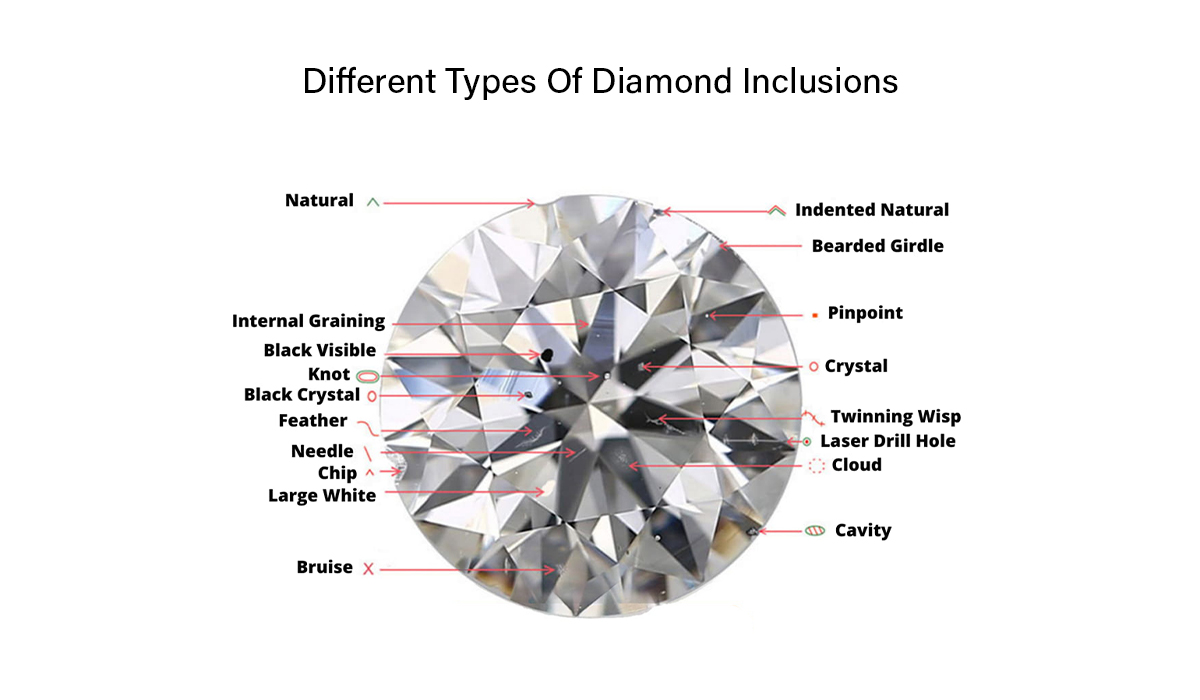
Lab Grown Diamonds have gained immense popularity in recent years, offering an ethical and eco-friendly alternative to mined diamonds. These diamonds are created in controlled environments, replicating the natural process but at an accelerated rate. One key aspect to understand when purchasing Lab Created Diamonds is the presence of inclusions—internal characteristics that can affect the diamond's appearance and value. While inclusions are common in both natural and lab grown diamonds, the types and patterns can differ. This guide will walk you through the various inclusions found in Lab Grown Diamonds and what they mean for your purchase.
Types of Inclusions in Lab Grown Diamonds
Understanding the inclusions in Lab Created Diamonds is crucial for making an informed decision. Here are the most common types of inclusions found in these diamonds:
1. Metallic Inclusions
Metallic inclusions are less common in CVD (Chemical Vapor Deposition) diamonds compared to HPHT diamonds. However, when they do occur, these inclusions can be remnants of metal impurities introduced during the growth process. They appear as tiny, dark specks within the diamond. Although typically not visible to the naked eye, these inclusions can still impact the diamond’s clarity grade. The presence and size of metallic inclusions in CVD Diamonds can affect the lab grown diamond price, with diamonds exhibiting fewer inclusions generally being more valuable.
2. Graphite Inclusions
Graphite inclusions occur during the formation of diamonds in the lab. These appear as black or dark gray spots and can sometimes create a cloudy appearance. Although graphite inclusions are less common than metallic ones, they can still impact the overall look and clarity of the diamond. If you're considering a 1 carat lab grown diamond, it's essential to check for these inclusions as they can be more noticeable in larger diamonds.
3. Feather Inclusions
Feather inclusions are tiny cracks within the diamond, often resembling feathers or wisps. These can occur in both natural and lab grown diamonds but are slightly more common in the latter due to the stresses of the growth process. Feather inclusions can affect the durability of the diamond, especially if they are near the surface. However, in many cases, they are minor and do not significantly impact the lab created diamonds price.
4. Pinpoint Inclusions
Pinpoint inclusions are minute crystals trapped within the diamond. They appear as tiny white dots and are often not visible without magnification. In Lab Grown Diamonds, pinpoint inclusions are relatively common and usually have minimal impact on the diamond's appearance. Their presence is often only detected under a microscope and thus has little effect on the overall lab grown diamond price.
5. Cloud Inclusions
Cloud inclusions are clusters of pinpoint inclusions that can create a hazy or cloudy area within the diamond. These are more prominent in larger diamonds, such as a 1 carat lab grown diamond. While cloud inclusions can affect the diamond's clarity, they are typically spread throughout the diamond and may not be noticeable to the naked eye. However, significant cloud inclusions can reduce the diamond's brilliance and subsequently its value.
Evaluating Lab Grown Diamond Inclusions
When evaluating Lab Created Diamonds, it’s essential to consider the type, size, and location of inclusions. Here's how to approach this:
Clarity Grade:
The clarity grade, which ranges from Flawless (FL) to Included (I3), gives a general idea of the inclusions present. A higher clarity grade means fewer or less visible inclusions, which can increase the lab created diamonds price.
Size and Visibility:
Larger inclusions are more noticeable and can impact the diamond's appearance. For example, a 1 carat lab grown diamond with significant inclusions may appear less brilliant than a similar diamond with fewer inclusions.
Location:
Inclusions located near the center of the diamond are more visible than those near the edges. Central inclusions can also affect how light passes through the diamond, impacting its sparkle.
Type of Inclusion:
Different inclusions affect diamonds in various ways. Metallic inclusions might not be visible without magnification, while feather inclusions can impact durability. Understanding the type of inclusion helps in making an informed decision.
Conclusion
Lab Grown Diamonds offer a sustainable and affordable alternative to natural diamonds, but it’s crucial to understand the types of inclusions that can occur. From metallic and graphite inclusions to feathers, pinpoints, and clouds, each type can affect the diamond's appearance and value differently. By knowing what to look for, you can choose a diamond that meets your aesthetic and budgetary needs. Whether you’re considering a 1 carat lab grown diamond or a smaller stone, being informed about inclusions will help you navigate the lab created diamonds price landscape and find the perfect gem for you.
Surat
0 1:20:45 PM
4th Floor, BLGD Corporation, Akshar Building, Opp. Mehta Petrol Pump, Katargam, Surat, Gujarat 395004
+91 85003 85003
Mumbai
0 1:20:45 PM
DW-3100, Bharat Diamond Bourse, Bandra Kurla Complex, Bandra (E), 400051
+91 97264 32003
New York
0 2:50:45 AM
551 5th Avenue, 7th Floor New York, NY 10176, USA.
+1 (929)-217-1647
Hong Kong
0 3:50:45 PM
1006, Hung Hom Commercial Center Tower B, 37 Ma Tau Wai Road, Hung Hom, Kowloon, Hong Kong
+852 2723 1243
Akshar Building, 4th floor, BLGD corporation, opp. Mehta Petrol pump, Katargam-395004, Surat, Gujarat, India

